With more than 27.9 million confirmed cases and a little over 490,000 fatalities in the United States to date, the COVID-19 outbreak has schools and colleges across the country scrambling for fast solutions to protect their students, faculty, and staff. At the Centers for Disease Control and Prevention’s recommendation, a vast majority of schools across all levels have announced closure. Depending on the “district or school levels,” school reopening dates for normalized operations and classes are still uncertain of how they will handle the crisis in the upcoming semesters.
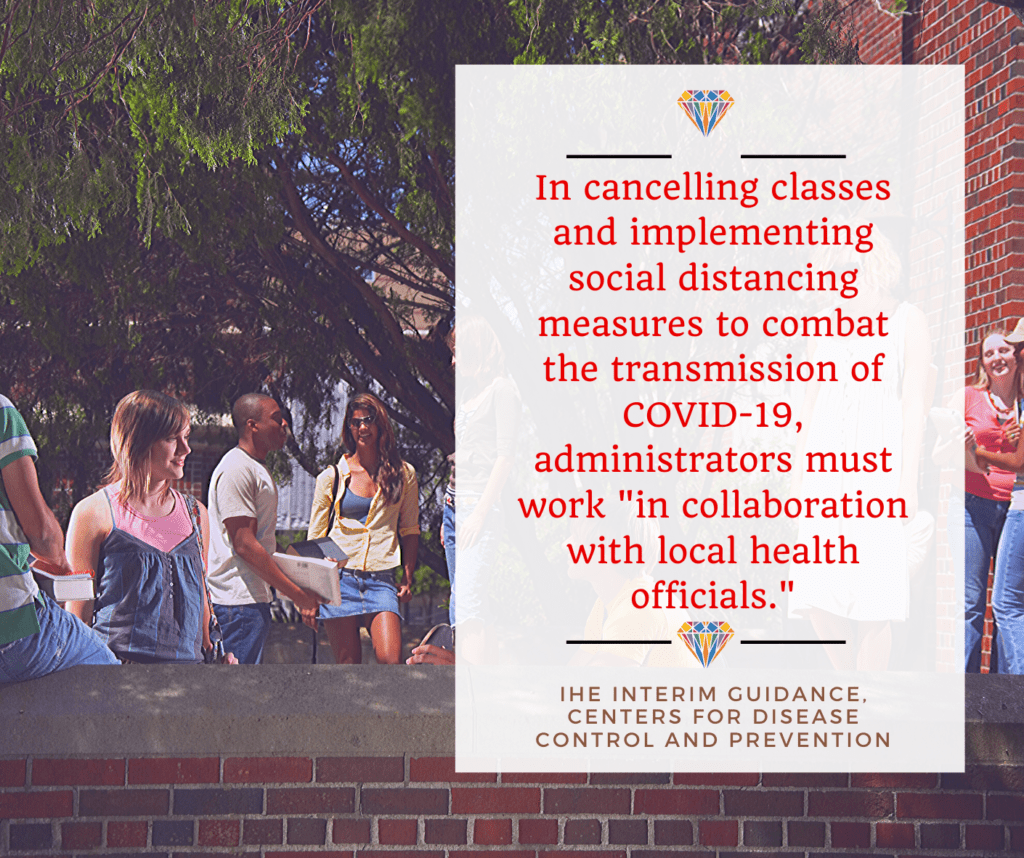
But, considering the uncertainty surrounding the coronavirus pandemic—that is now affecting at least 55 million students in 124,000 private and public schools—nothing is set in stone. Flattening the curve, as experts call it, requires implementing solid plans to, among others, reduce physical contact.
Schools don’t just have kids in classrooms; adults such as teachers and parents of all ages are present in schools, too. Older adults, as well as people with pre-existing health conditions, have a high risk of contracting COVID-19—and they may be present in school. With schools closed, people of all ages limit the risk of getting infected and infecting others. It is, after all, every adult’s job to minimize the possibility of further spreading the virus.
- The College Situation
- Is Online Learning A Real Solution?
- Surviving Online Learning in College
- What The Future Holds
The College Situation
Along with schools in basic education levels, American colleges and universities have made their emergency plans public. Nearly all of them have announced school closures, as reflected on a list maintained by Bryan Alexander, a senior scholar at Georgetown University. To date, a number of universities are keeping only their clinics, hospitals, and research laboratories open.
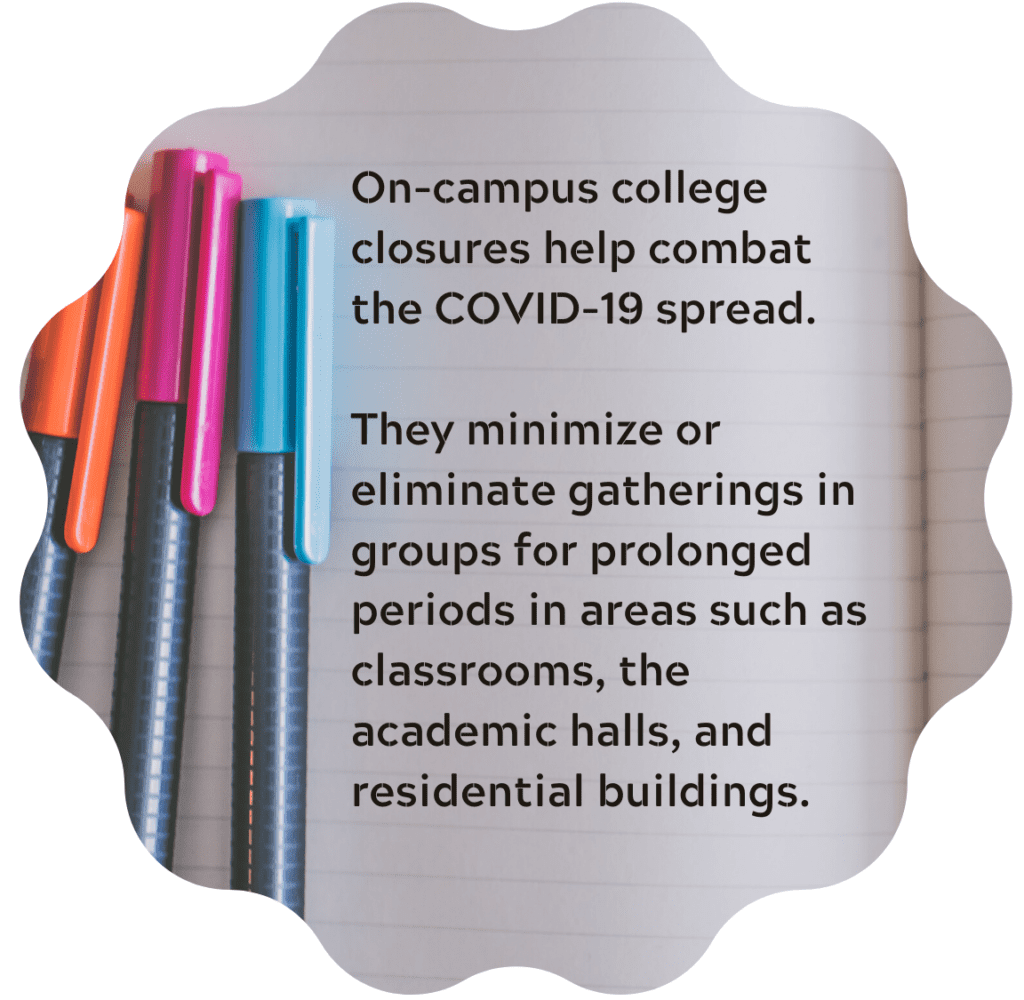
Colleges and universities are highly vulnerable to the COVID-19 spread, considering the proximity of students studying, living, and working on-campus. Halting classes minimizes gatherings in groups and spending prolonged periods in areas such as classrooms, academic halls, and residential buildings.
Details on college and university closures vary but most of them share the same plans. All such higher education institutions are putting campus visits, campus tours, and open-house sessions on hold. The events, which had been otherwise scheduled, are canceled, postponed indefinitely, or to be held online. Orientation schedules for incoming students are also likely to be impacted by the cancellations. Many have also announced school-sponsored international travel bans and halted their study-abroad programs.
Colleges and universities are dedicating COVID-19-related pages on their website to provide students with the latest updates on-campus services or events. These pages also house critical information on the pandemic, including FAQs on symptoms and prevention.
In an Interim Guidance, the CDC says it works alongside college administrators for the “continuity of teaching, learning, and research” amid the COVID-19 crisis. The agency emphasizes that in implementing the measures to combat the spread of the virus—including class cancellations and social distancing strategies—administrators must work “in collaboration with local health officials.”
With important academic schedules on the line, the National Association of College Admission Counseling is encouraging flexibility with college admission processes, including “deposit and decision deadlines.” Student coalitions are also petitioning for colleges and universities to “eliminat[e] standardized testing requirements and [adopt] test-optional policies” for the 2020-2021 admissions cycle.
Is Online Learning a Real Solution?
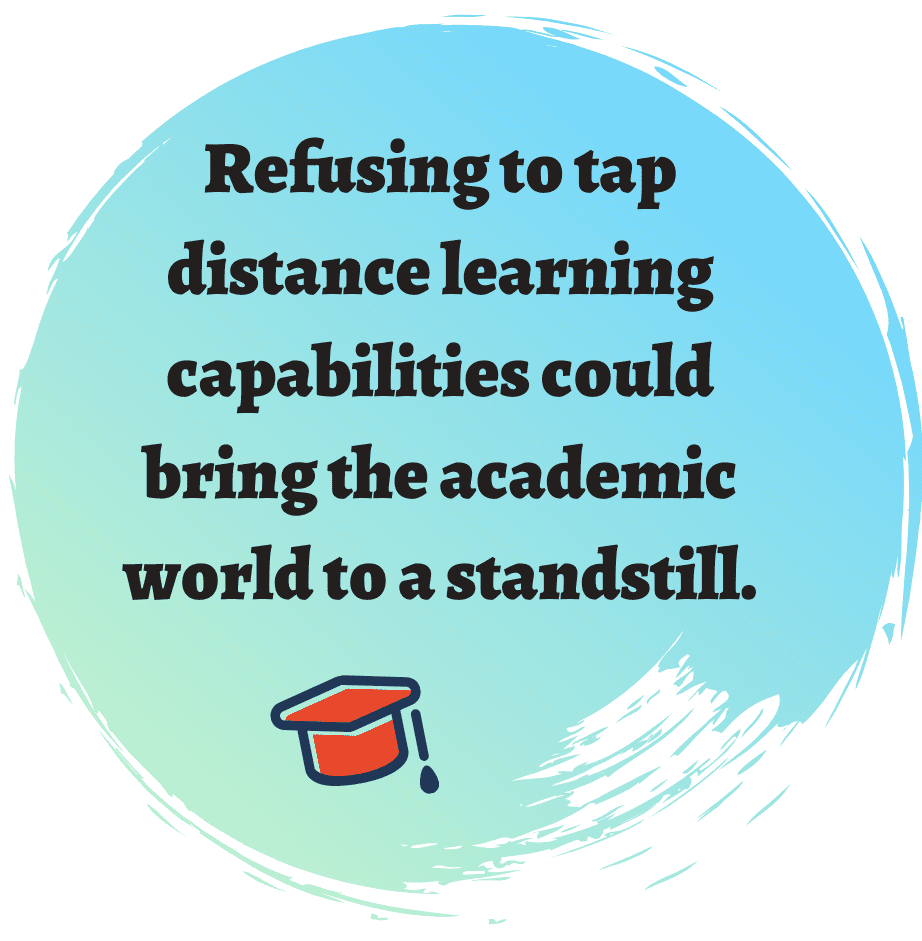
Because the safety of students and staff takes top priority, it makes perfect sense for higher education administrators to act with an abundance of caution as the number of COVID-19 cases continues to escalate. As more of the situation unfolds, it became inevitable to cancel in-person classes, empty dorms, and cancel even the most important school events such as graduation.
But while they found a way to effectively keep students and staff safe, colleges and universities saw a new pressing problem unfolding: academic and business continuity.
Distance learning is seen as an appropriate solution to protect students and not disrupt school in the process. Refusing to tap distance learning capabilities could bring the academic world to a standstill.
Online learning works for these two main reasons:
- Online classes provide students with a secure yet flexible environment for learning.
- Online learning stabilizes college and university operations from both the learner’s and instructor’s point of view.
Colleges and universities are moving their undergraduate and graduate courses online, advising students to meet their academic requirements, take exams, and complete their semesters remotely—for the time being, at least.
We created an infographic to see if onlinE school is a good option: How To Tell If Online Education Is For You
And because many schools have been using the Internet to deliver courses either partially or completely online, going entirely digital isn’t something new for administrators and college students. In fact, for schools offering 100% or hybrid courses, the technological and infrastructural foundation is already in place.
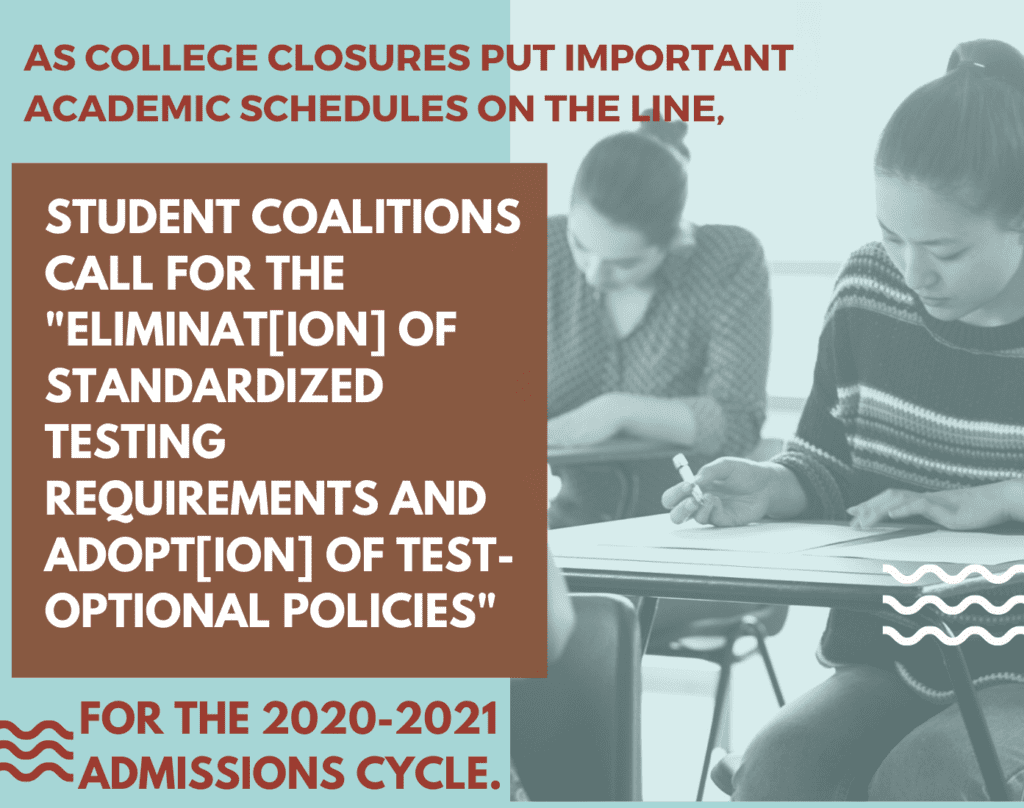
With this drastic yet necessary move toward change comes a number of drawbacks. Colleges and universities admit that there are rooms for improvement, and they are working hard to develop better solutions for an excellent virtual instruction experience. Some colleges are fast-tracking their online learning application training for faculty.
Shifting to virtual learning also raises questions of educational access and equity. Off-campus, not every college student has access to the right resources and reliable Internet. Traveling home may even be an unaffordable option for some.
Surviving Online Learning in College
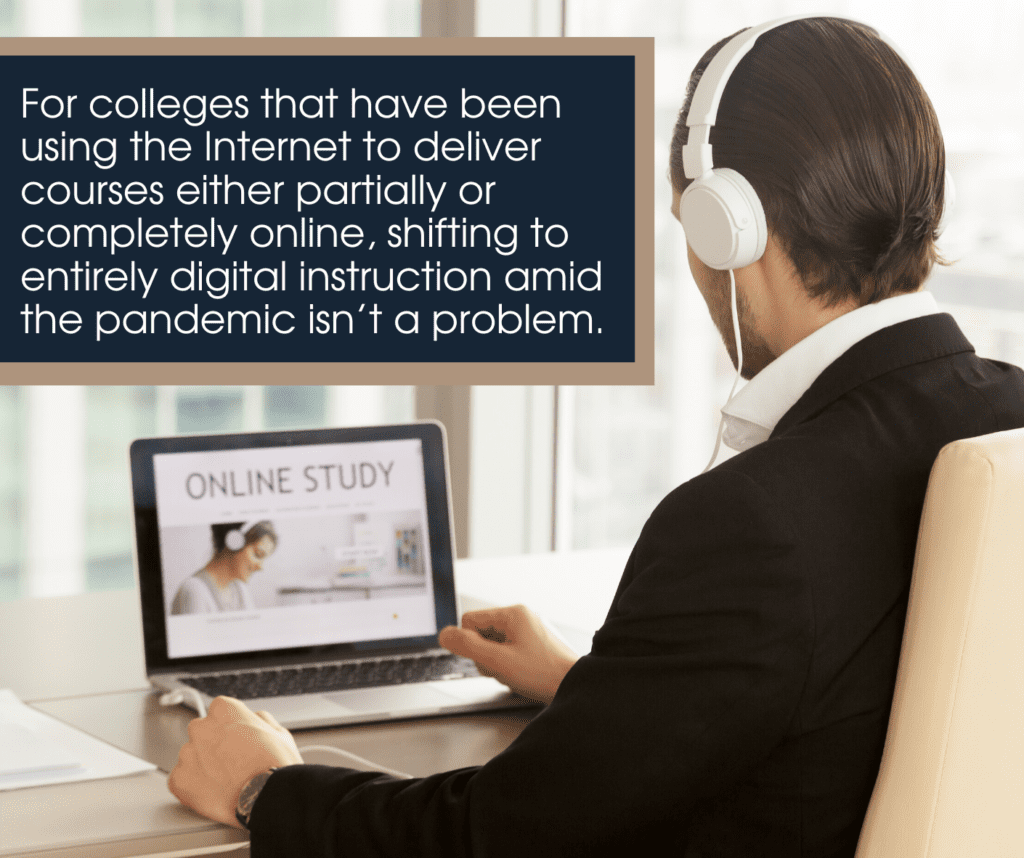
Most American colleges and universities are equipped for substantive distance learning programs.
Online course instructors are expected to handle their class as well as they would on a face-to-face setup. To ensure this, they must:
- Find the technologies that best fit the needs of the class.
- Gain access to tools and instructional resources to be used.
- Test the ability of each student to log on and use the system.
- Keep track of students with limited access to tools and technologies.
- Get student feedback on their e-learning experience and suggestions for improvement.
For students who have attended on-campus for most of their academic life, surviving e-learning entails the right strategies and the right attitude toward it! In implementing e-learning, online educators must “embrace the inevitability that mistakes would be made” and take e-learning seriously for the longer term, according to Dr. Michelle Reid, superintendent at the Northshore School District in Bothell, WA.
8 Ways to Develop Self-Motivation for Online College Success
Proven Techniques to Meet That Deadline
What the Future Holds
The question begs: when exactly will colleges and universities reopen? Sadly, no date is in sight.
The unprecedented scale of the coronavirus pandemic has the world combing the earth for answers and lasting solutions.
But while so, learners—on whom the future of the country essentially lies—don’t have to deal with downtime. Consequently, pivoting to online learning as an alternative means of delivering education was a critical decision that educators had to make in the wake of the fast-moving COVID-19.
Panicking and dwelling in negative thoughts are counterproductive to the efforts of the community and the academes, sabotaging the very purpose of the decision to switch to e-Learning. The sudden shift isn’t easy for most, but keeping everyone safe and healthy is a priority. Keep your eyes on the big picture!

Would you like to see some helpful, yet interesting information? Check out what Albert Einstein had to say about things in this article entitled “11 Albert Einstein’s Philosophies: How They Apply to Today’s Online Learning.”
On another note… If you feel lead to pursue a career in Nursing to help combat COVID-19 and to enter a rewarding career focused on helping others, please see our Nursing Degree and Career Guide!